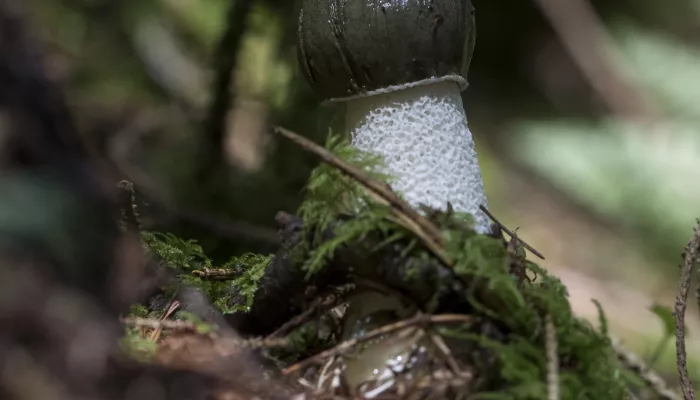| Statistics | |
|---|---|
| Cap diameter: | 3cm - 6cm |
| Stem height: | 10cm - 25cm |
The stinkhorn has an unmistakeable and intense stench that has been likened to rotting meat. Its appearance is also very distinctive: a phallic, white, stem-like structure, with a brown, bell-shaped head.
About
The stinkhorn is a phallus-shaped fungus that emerges from an egg-shaped base. The pitted, bell-shaped cap is covered with olive-brown slime and has an offensive smell. The stinkhorn can be found in woods and gardens, and is associated with rotting wood. Fungi belong to their own kingdom and get their nutrients and energy from organic matter, rather than photosynthesis like plants. It is often just the fruiting bodies, or 'mushrooms', that are visible to us, arising from an unseen network of tiny filaments called 'hyphae'. These fruiting bodies produce spores for reproduction, although fungi can also reproduce asexually by fragmentation.
How to identify
The foul odour and phallic shape of the stinkhorn are unmistakeable. This fungus has a white stem-like structure that erupts from an 'egg', topped with a bell-shaped, olive-brown and slimy head.
Did you know?
The spores of the stinkhorn are contained within the slime that covers its cap. Flies are attracted to the offensive-smelling slime, in turn, scattering the spores.
How people can help
Fungi play an important role within our ecosystems, helping to recycle nutrients from dead or decaying organic matter, and providing food and shelter for different animals. Try leaving log piles and dead wood to help fungi and the wildlife that depends on it.

